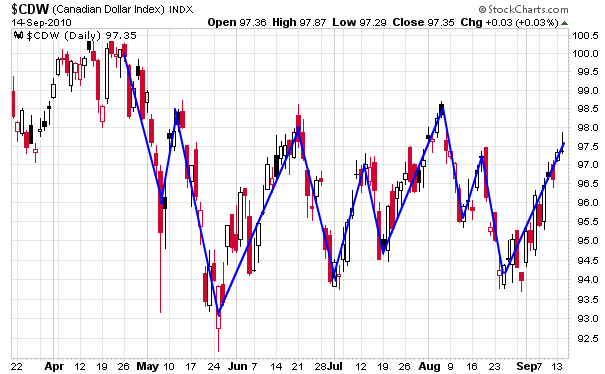It is an important benchmark to see that the price of crude oil is at an all-time high, at least in nominal US dollar terms, since the economic crisis:
Every day when I look around me, I see people in their automobiles, and I see trucks on the road, and airplanes flying in the sky. While the sample of one is statistically insignificant, when you start to think about world-wide demand for concentrated portable energy (which is what crude oil represents), coupled with the increasingly high costs to mine supply, leads one to suspect that hedging their energy consumption in the form of owning energy assets would be a prudent portfolio decision.
This isn’t new – I have been discussing this for the past couple years. I believe in crude much more than gold in terms of hedging your purchasing power.
Large-cap oil sand companies like Suncor (TSX: SU) and Cenovus (TSX: CVE) are highly correlated to the price of crude oil. They also have significant bitumen reserves which become increasingly valuable as the price of crude rises. Due to the nature of the financial structure of these companies, they are not going to double overnight, but they will retain their value as long as you believe in the stability of the Canadian and Alberta governments.
Companies with oil assets outside “safe” jurisdictions (e.g. Venezuela) involve much more risk, hence you will find them cheaper.
There are also some other smaller cap companies in the oil sands space that are worthy of consideration, and they contain a bit more financial leverage which would result in potentially larger gains.


